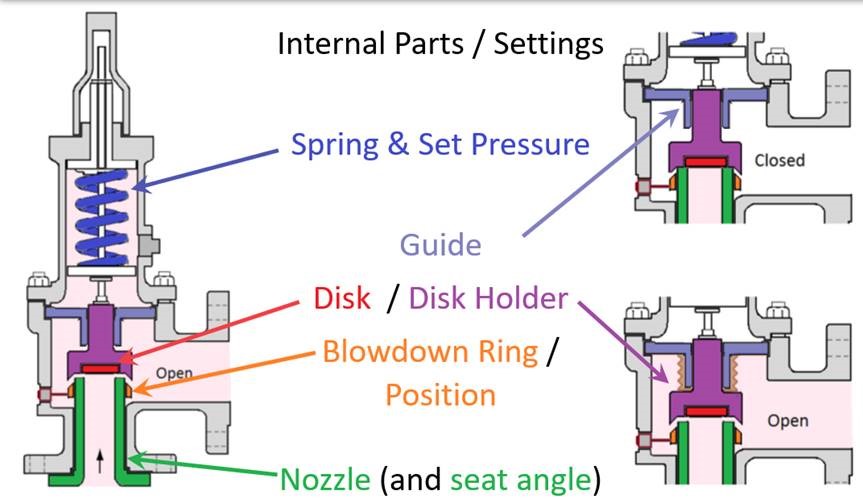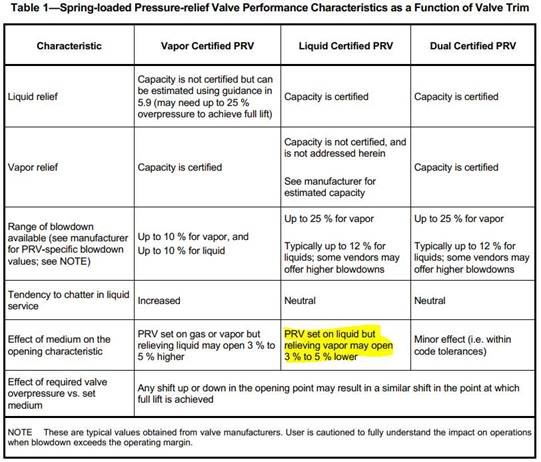Did you know that liquid trim valves can be certified for vapor?
There is often confusion around the required trim and certification when selecting a new safety-relief valve. For example, when there are both vapor relief scenarios and liquid relief scenarios, is a dual-certified PRV required? What about when the service is liquid but the controlling scenario is vapor? In the past, we have recommended “dual-certified” PRVs when there are both liquid and vapor relief scenarios, but these valves can be difficult to obtain or could have long lead times. When might there be alternatives? In this discussion we will look at what liquid trim means and when different trims may be suitable for different relief possibilities.
Trim
The valve’s trim comprises the spec, geometry, and settings related to the nozzle, disk, disk holder, and blowdown ring. A liquid trim valve will have different performance characteristics in liquid service compared to vapor service, and vice versa. A dual trim valve is a “hybrid” trim that works efficiently in either media. Note that some valves are modified or adjusted between certifications for different testing media. This discussion pertains to those that require no modification or adjustment between certifications for different testing media (see ASME BPVC Section VIII Code Case 2787).
Due to instability associated with vapor trim valves relieving liquid, vapor trim valves are only recommended when there are no liquid or 2-phase relief scenarios. In addition, per ASME BPVC Section VIII (2021 Edition) UG-150(e), “Vessels that are to operate completely filled with liquid shall be equipped with pressure relief devices designed for liquid service…”

Certified Capacity
Manufacturers do not certify vapor trim valves for liquid because vapor trim valves may not function safely when relieving liquid. Spring-loaded valves with multiple certifications (vapor and liquid) are available but have limited availability and longer lead times.
When specifying a new PRV in liquid service or with liquid relief scenarios, a liquid-trim valve is appropriate in most cases. Note that liquid trim valves relieving vapor or gas may have much longer blowdown (up to 25%), even if dual certified. The impact of this extended blowdown (and duration of release) should be considered when selecting this type of valve. Additionally, when relieving vapor or gas, the valve may open up to 5% below the stamped pressure, so the margin between the set pressure and the operating pressure of the system should be carefully considered.
The opening characteristics of liquid trim valves set to open on liquid but with vapor scenarios are shown in API Std 520 Part I Table 1.

There are many other considerations when sizing and selecting a new safety-relief valve. For details of a specific model, the manufacturer should be consulted.

